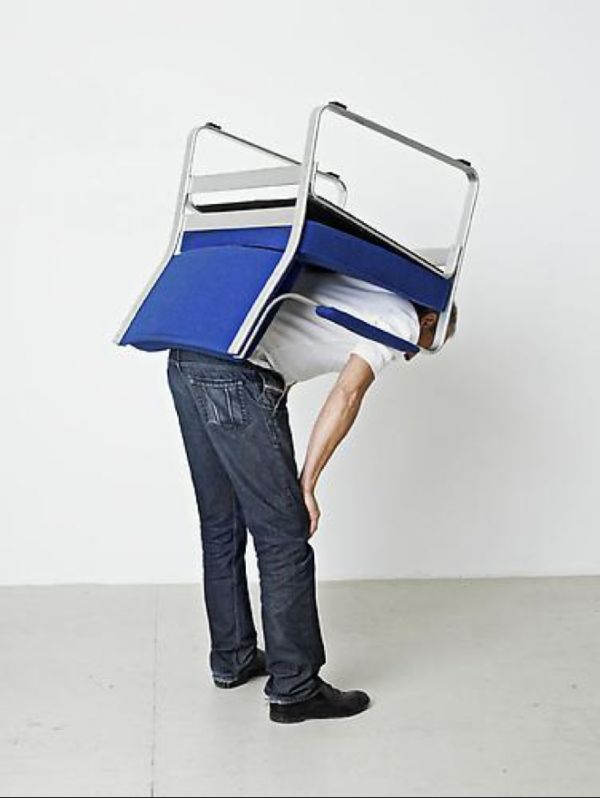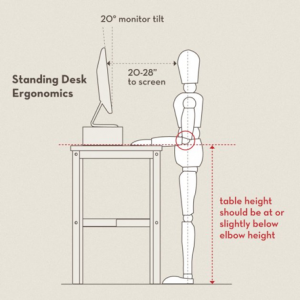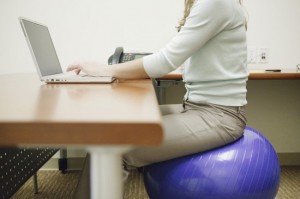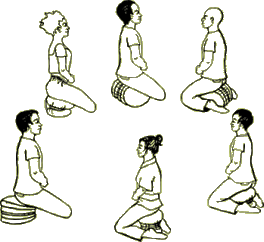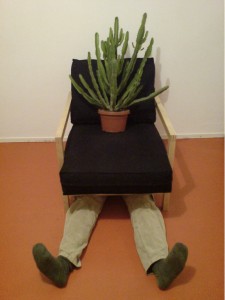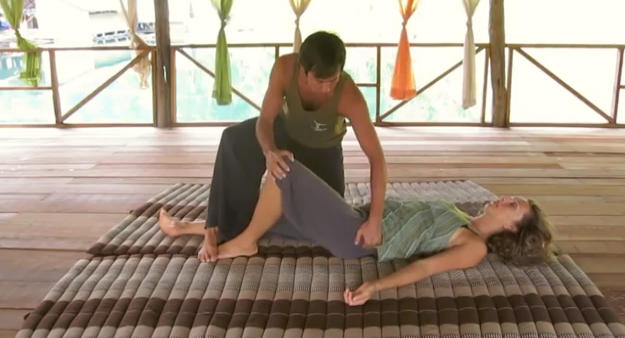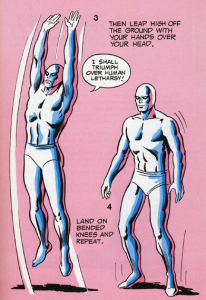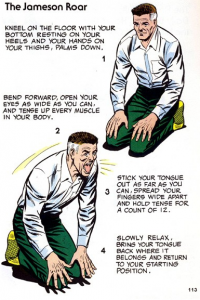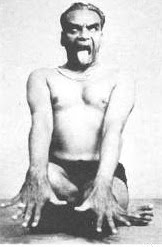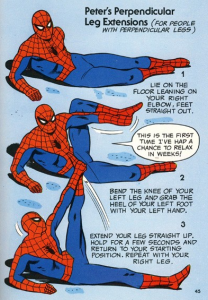About sitting around the clock:
Sitting all day can have real negative impacts on our well-being and health. You can take a quick look at this Sitting is Killing You infographic to get a picture, and/or watch the talk Coding Your Body physical therapist Sophie Hiltner gave last week at 30C3.
One of my favorite “hack” to remedy for this problem has to be the UNCOMFORTABLE CHAIR, which was cited by Sophie Hiltner at the end of her talk. When asked by someone in the audience what is the best chair to prevent musculo-skeletal disorders caused by sitting all day, she answered that the best chair could actually be the most uncomfortable of all, the most basic one, because then one has no choice but to stand up every so often to stretch. I think that is brilliant. It reminds me of a friend, movie director, who used exactly the same trick for a different, and also very interesting, purpose: He said he would always sit in the most uncomfortable chair to watch movies, because he believed comfort was detrimental to a healthy critical sense, and he certainly hated falling asleep in the arms of whatever storytelling.
Sophie Hiltner also cited having INCENTIVES TO STAND UP in the room, like placing the pot of tea or coffee on a different table than the actual desk, so one has to stand up every once in a while to get a refill. It’s a good one too, though the incentive has to be pretty strong, knowing how sometimes we don’t get up to go to the bathroom even though we are bursting.
Another woman we met told me how she cannot stay, and will not, stay in place behind her computer even though she does spend hours on it, and how she was always POSTURE SHIFTING at her large desk. She demonstrated to me a few moves, options for sitting, kneeling, forward bending, and it resembled a strange, very personal kind of yoga involving office accessories. And, she also moves/works away from the main desk, to other spots in the room where she experiments with other postures. She said it will all be perfect when she gets a desk that can adjust its height so she could then include standing postures in her “routine”. Very refreshing 🙂
STANDING DESKS are an interesting option by the way, you can read some posts about them + IKEA hacks and how to build your own here on lifehacker.
She also mentioned her and her son trying the exercise BALL as an office chair, but said that it proved tiresome and too f****ing distracting in the end. I have never tried it so I wouldn’t know. I hear that the interest is that you have to keep moving to maintain your stability, and that this gets your (forgotten, atrophied) stabilizing muscles to workout and that it prevents you from turning into a petrified human that will end up breaking at some point.
Me, I ideally like to have a chair with a wide enough seat (not too soft or spongy) so I can sit in a SEMI-LOTUS POSE on it every now and then with a straight back (not straight as in straight, straight as in with nice spinal curves). Days when I’m not flexible enough, I will add a CUSHION under my bottom, just so my hips are higher than my knees (if not, the effort I have to make to raise myself over the level of my knees is too much and counterproductive). This is also known as “ZAFU SITTING” for meditation. This way of using a cushion or “prop” can be useful even when sitting more classically on a chair (legs uncrossed), for elevating the hips and helping reinstall the healthy spinal curves. DO think about it whenever you are working on the floor at a low table.
About computers and other devices sucking life juices out of you…
The same woman mentioned another very interesting “trick” (that is way more than a trick, actually) so that machines would not end up sucking all life out of her : She has DOGS. Most of us have probably already heard how stroking a “pet” can be soothing for the mind and emotions, but that is not exactly the point here. In her case it has more to do with sharing her work space with OTHER LIFE FORMS, having a room inhabited, kept vibrant with life. Not to mention the fact that dogs will always remind you that is is TIME TO TAKE A WALK (how’s that for an incentive?!). She cites dogs for lively counterpoints to computers and/or points of reference for what matters in life (that is, life), but of course there are many ways in which to explore how to keep a connection to the living world while giving it all at the work place. It can make it easier to COME BACK from long deep immersions into technological realms.
I like PLANTS for that purpose. Indeed they are more easy going than dogs, yet not less alive. I sometimes like to suggest CARING FOR A PLANT as means to start taking care of oneself (better), and to stay connected to life. An idea to make it even more fulfilling is to pick a plant which kind of resembles you: in shape, original habitat (where does it grow), cycles, flowers or no flowers, spikes or no spikes, needs for water and sunlight, and whatever more you find relevant. A plant that you will like and will like to care for, and that, without you really knowing at first, will care for you too (no, I’m not crazy). Then keep it with you at your work place. Look at it from time to time. What does it need ? Do you provide it ? Does it look well? If it has become dusty, asphyxiated, dehydrated, is turning yellow, is losing its leaves, and is shrinking… You probably are too.
A taste of other well-being hacks and how nice it could be to create a WELL-BEING HACK BOX
Other people at 30C3 shared with us other well-being hacks, tricks and personal rules that work for them and that one can use to improve their quality of life in relation to extensive use of computers and other devices. For example, not having devices in the bedroom (a huge step for many!), or at least turning them off before bed (yes, that is taking action), covering computers with a blanket (making them disappear for the time being almost like a magic trick would), taking offline holidays, only allowing oneself 10 minutes of use before breakfast, installing some software that will interrupt the computer work regularly… These tricks and hacks can be already well known and/or very singular and surprising, and they come in response to a vast array of discomforts, in relation to eating, sleeping, socializing… Each of these topics would deserve specific articles. Here now I just wanted to give you a glimpse of how nice it good be to actually collect and put some more of these hacks and fixes together in relation to specific problems so we can all pick from a box, be inspired, and overall feel better.
If you feel inspired and want to contribute with your own hacks, cyber grandpa and cyber grandma home remedies, go to our survey page on the menu of that blog ! THANK YOU 🙂
Art credits
Erwin Wurm, Idiot II & One Minute Sculpture
Mark Wentzel, XLounge

